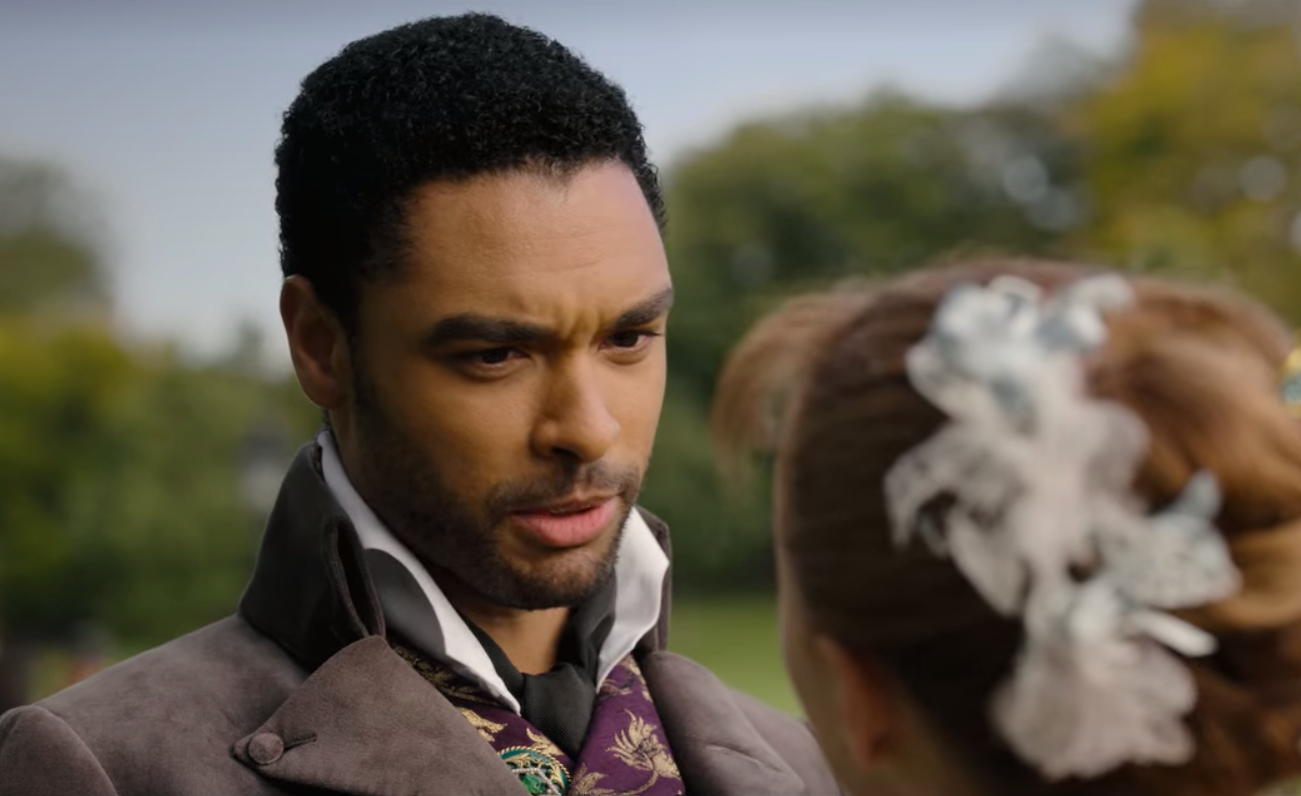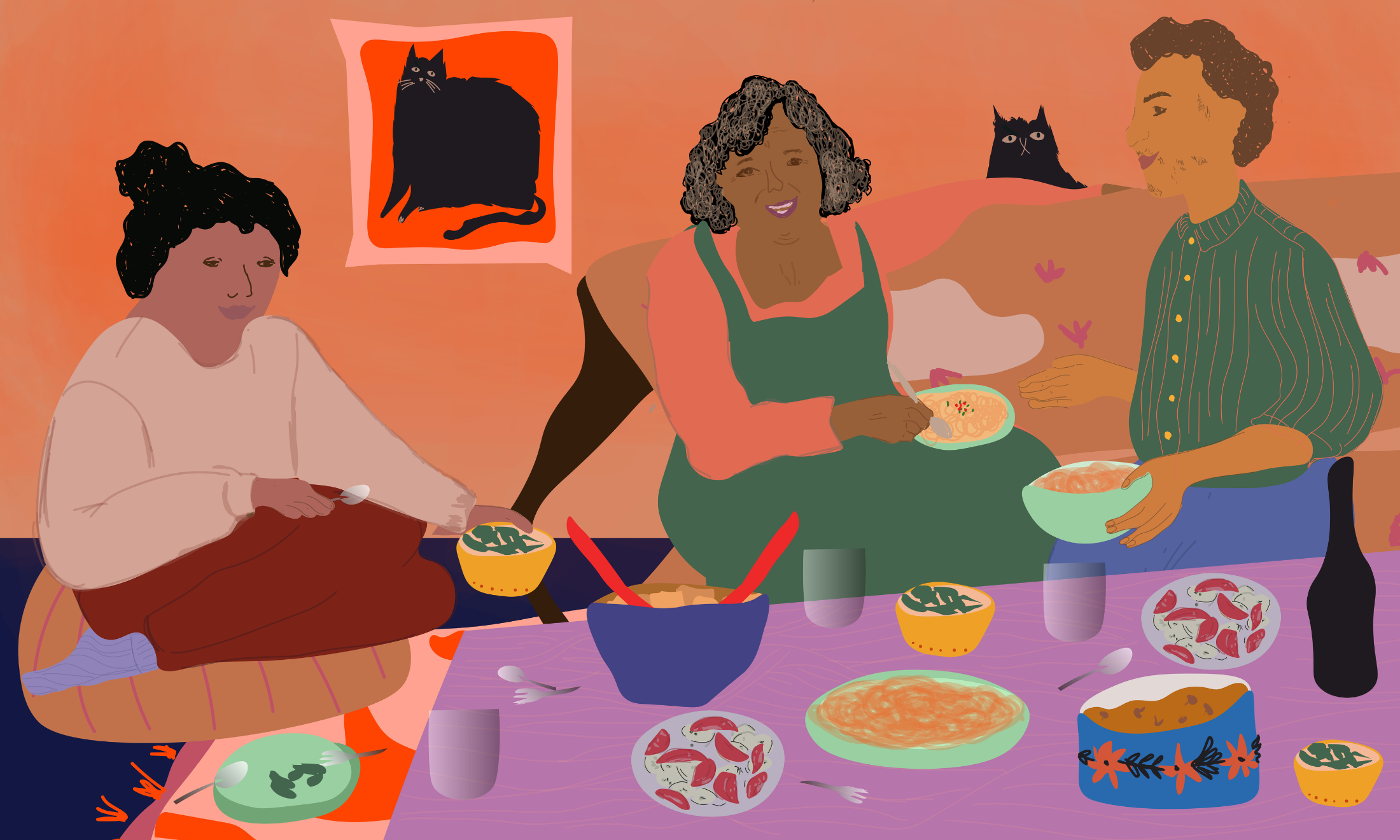
Image credit: Netflix
Bridgerton offers us the myth of a post-racial Britain that doesn’t exist
The original books never discussed racism, so why did the Netflix adaptation choose to address it?
Michele Theil
07 Jan 2021
Bridgerton is the new popular regency-era show from Shonda Rimes, which has been likened to a 19th century Gossip Girl series – but instead of messy high school drama, it’s full of upper class young women seeking to present themselves to eligible men in order to marry into wealthy and respectable families. Though the show (or The Duke) has taken the world by storm and received a positive reaction due to the diverse cast, unfortunately, the attempt to tackle race is clumsy. Despite some of the main characters being Black and mixed-raced, Bridgerton offers us a view of a post-racial Britain that simply can’t exist.
Bridgerton’s source materials, a series of romance books by Julia Quinn, don’t pretend to have a strong grasp on race relations during the period. Yet the choice to address it in the Netflix adaptation makes for an odd viewing. The storyline, as explained by Lady Danbury in episode four, seems to suggest that before King George married Queen Charlotte, who is Black in the Netflix series, people lived in “two separate societies, divided by colour”. And apparently it was the strength of their interracial love that ushered in a united Britain no longer plagued by racism. Sound familiar?
“Bridgerton doesn’t pretend to have a strong grasp on race relations during the period, but the choice to address it, makes for an odd viewing”
Whether now, or in the 19th century, this post-racial myth of Britain is at odds with the racism people of colour experience everyday in Britain and across the world. A person of colour marrying into the royal family doesn’t erase racism, as we’ve seen since Meghan Markle’s marriage to Prince Harry in 2018, which only exacerbated the hate towards Meghan herself for her “un-Princess like” behaviour and towards the people of colour who supported her. Like George and Charlotte in Bridgerton, Meghan and Harry are in love – but, unlike the show, their love doesn’t solve the legacy of racism that has existed for centuries.
That’s not how structural racism works. A marriage can’t undo the racial superiority of the British empire, which was closely linked to the “civilising mission”, the trans-Atlantic slave trade, or the ongoing racial discrimination and resentment towards people of colour after slavery was abolished.

I know we’re not meant to take the show seriously and it was never meant to be historically accurate – it’s supposed to be a fun story with steamy sex scenes and relationship drama. And while the Duke is extremely distracting eye-candy, I couldn’t help but feel annoyed that instead of sticking to the choice of a colour-blind cast, the producers decided to portray race in this way. Explaining away racism in one conversation about an interracial royal marriage is reminiscent of white Britons saying that Meghan’s entry into the royal family is proof that Britain isn’t racist.
Also, the royal family in Britain is a longstanding privileged (and white) institution which is a symbol of the imperialist British Empire. The wealth and extravagance in the show, with fancy balls and parties every week during “the London season” as well as trips to country estates, is what makes it a wonderful feat of escapism, but the fact that much of it would have been acquired through the slave trade is conveniently glossed over. Furthermore, if there really were racial divisions between the people before the marriage, as Netflix’s storyline suggests, are we meant to believe that people of colour just accepted this sudden lack of racism without comment or resentment?
“Bridgerton’s portrayal of race in society is idealised – it wants us to believe that racism is merely a product of hatred, which can be driven out by love”
Bridgerton’s portrayal of race in society is idealised – it wants us to believe that racism is merely a product of hatred, which can be driven out by love. It doesn’t discuss race except in the context of telling us that their society is better, and equal.
But a public and privileged interracial relationship doesn’t solve racism. It’s not something people can choose to “unthink” just because a Black person enters into the upper echelons of society, like the royal family. The way the show handles race is akin to sweeping it under the rug and pretending it doesn’t exist (a decidedly British trait) – an idea people of colour still have to deal with today as we fight for our rights.
Bridgerton is a great show, and I loved imagining an equal world filled with parties and attractive men. Yet it just goes to show that it’s not possible to separate and erase Britain’s ongoing history of racism no matter how much we want to. Clearly, a post-racial Britain isn’t likely anytime soon and the reality is – people of colour living in Britain can’t escape the topic of racism, even in a 19th century drama.
The myth of a post-racial Britain might be nice, but it simply doesn’t exist.









